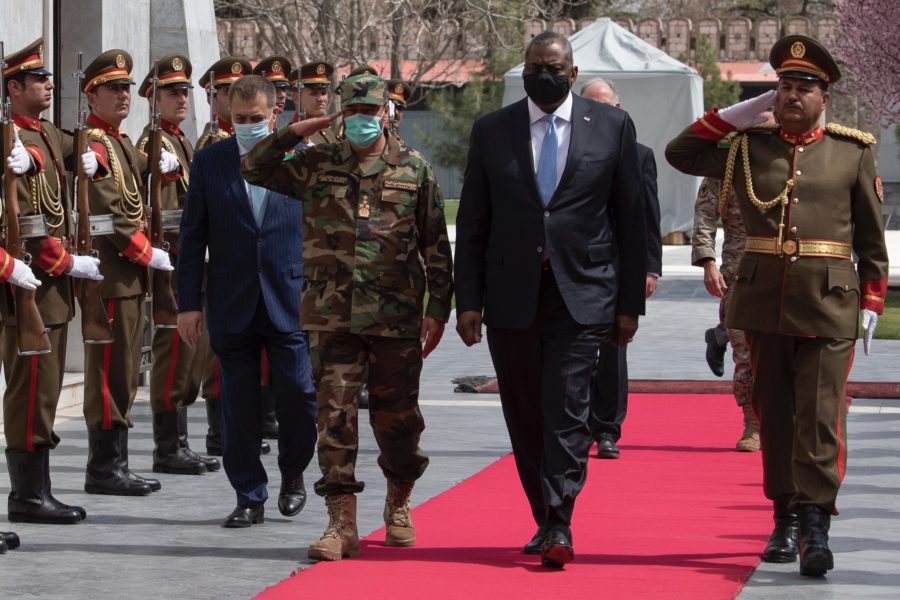Defense Secretary Lloyd J. Austin III visited Afghanistan on March 21 to meet with Afghan leaders and urge further reduction in violence, as NATO foreign ministers prepare to meet this week to discuss the future of the mission.
“It’s obvious that the level of violence remains pretty high in the country,” Austin said in Kabul after meeting with Afghan President Ashraf Ghani and U.S. Forces-Afghanistan boss Gen. Austin “Scott” Miller to gauge progress following the February 2020 deal with the Taliban. “We’d really like to see that violence come down. And I think if it does come down, it can begin to set the conditions for some really fruitful diplomatic work.”
There are now about 2,500 total troops officially in the country, and the deal with the Taliban calls for a full withdrawal by May 1. However, enemy-initiated attacks in the country remain high and President Joe Biden recently said it is “tough” to see how that deadline could be met.
Austin said everyone is “really desirous of a responsible end” to the war, but would not preview any upcoming force structure decisions.
NATO Secretary-General Jens Stoltenberg, in a March 22 press conference before the foreign minister meetings, said the alliance will assess the status of the conflict and “make decisions together as NATO allies.”
There are about 10,000 NATO troops in Afghanistan training Afghan forces. Local forces take the lead in counter terrorism operations, but rely heavily on U.S. and NATO assistance.
“When it comes to our military presence, we will make decisions together based on the situation in Afghanistan and of course the progress in the peace talks, and that’s the main focus now to make sure that there has been progress in the peace talks,” Stoltenberg said.
U.S. Secretary of State Antony J. Blinken, who will be at the NATO discussions, recently told Ghani the Afghan government must work to make peace, and it is likely the Taliban would quickly gain territory if the U.S. left the country.
